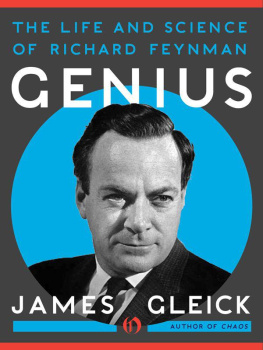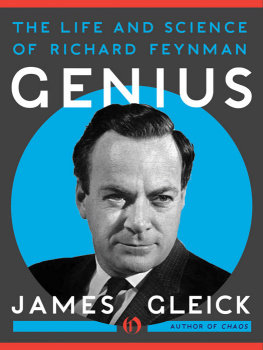James Gleick - Time Travel
Here you can read online James Gleick - Time Travel full text of the book (entire story) in english for free. Download pdf and epub, get meaning, cover and reviews about this ebook. year: 2016, publisher: Knopf Doubleday Publishing Group, genre: History. Description of the work, (preface) as well as reviews are available. Best literature library LitArk.com created for fans of good reading and offers a wide selection of genres:
Romance novel
Science fiction
Adventure
Detective
Science
History
Home and family
Prose
Art
Politics
Computer
Non-fiction
Religion
Business
Children
Humor
Choose a favorite category and find really read worthwhile books. Enjoy immersion in the world of imagination, feel the emotions of the characters or learn something new for yourself, make an fascinating discovery.

- Book:Time Travel
- Author:
- Publisher:Knopf Doubleday Publishing Group
- Genre:
- Year:2016
- Rating:4 / 5
- Favourites:Add to favourites
- Your mark:
- 80
- 1
- 2
- 3
- 4
- 5
Time Travel: summary, description and annotation
We offer to read an annotation, description, summary or preface (depends on what the author of the book "Time Travel" wrote himself). If you haven't found the necessary information about the book — write in the comments, we will try to find it.
Time Travel — read online for free the complete book (whole text) full work
Below is the text of the book, divided by pages. System saving the place of the last page read, allows you to conveniently read the book "Time Travel" online for free, without having to search again every time where you left off. Put a bookmark, and you can go to the page where you finished reading at any time.
Font size:
Interval:
Bookmark:
ALSO BY JAMES GLEICK
Chaos: Making a New Science
Genius: The Life and Science of Richard Feynman
Faster: The Acceleration of Just About Everything
What Just Happened: A Chronicle from the Information Frontier
Isaac Newton
The Information: A History, a Theory, a Flood

Copyright 2016 by James Gleick
All rights reserved. Published in the United States by Pantheon Books, a division of Penguin Random House LLC, New York, and distributed in Canada by Random House of Canada, a division of Penguin Random House Canada Limited, Toronto.
Pantheon Books and colophon are registered trademarks of Penguin Random House LLC.
Grateful acknowledgment is made to Houghton Mifflin Harcourt Publishing Company for permission to reprint excerpts from Burnt Norton and The Dry Salvages from Four Quartets by T. S. Eliot, copyright 1936 by Houghton Mifflin Harcourt Publishing Company, renewed 1964 by T. S. Eliot, and renewed 1969 by Esme Valerie Eliot. Reprinted by permission of Houghton Mifflin Harcourt Publishing Company. All rights reserved.
Library of Congress Cataloging-in-Publication Data
Name: Gleick, James.
Title: Time travel / James Gleick.
Description: New York : Pantheon Books [2016]
Identifiers: LCCN 2016002323. ISBN 9780307908797 (hardcover). ISBN 9780307908803 (ebook). ISBN 9780375715204 (open market).
Subjects: LCSH: Space and timePopular works. Time travelPopular works.
Classification: LCC QC173.59.S65 G54 2016. DDC 530.11dc23. LC record available at lccn.loc.gov/2016002323
Ebook ISBN9780307908803
www.pantheonbooks.com
Jacket by Peter Mendelsund
v4.1_r1
ep
To Beth, Donen,
and Harry
Your now is not my now; and again, your then is not my then; but my now may be your then, and vice versa. Whose head is competent to these things?
Charles Lamb (1817)
The fact that we occupy an ever larger place in Time is something that everybody feels.
Marcel Proust (1927?)
And tomorrow
Comes. Its a world. Its a way.
W. H. Auden (1936)
Contents
Cover
Also by James Gleick
Title Page
Copyright
Dedication
Epigraph
Chapter One: Machine
Chapter Two: Fin de Sicle
Chapter Three: Philosophers and Pulps
Chapter Four: Ancient Light
Chapter Five: By Your Bootstraps
Chapter Six: Arrow of Time
Chapter Seven: A River, a Path, a Maze
Chapter Eight: Eternity
Chapter Nine: Buried Time
Chapter Ten: Backward
Chapter Eleven: The Paradoxes
Chapter Twelve: What Is Time?
Chapter Thirteen: Our Only Boat
Chapter Fourteen: Presently
Acknowledgments
Sources and Further Reading
Illustration Credits
About the Author
ONE
Machine
Being young, I was skeptical of the future, and saw it as a matter of potential only, a state of things that might or might not arise and probably never would.
John Banville (2012)
A MAN STANDS AT the end of a drafty corridor, a.k.a. the nineteenth century, and in the flickering light of an oil lamp examines a machine made of nickel and ivory, with brass rails and quartz rodsa squat, ugly contraption, somehow out of focus, not easy for the poor reader to visualize, despite the listing of parts and materials. Our hero fiddles with some screws, adds a drop of oil, and plants himself on the saddle. He grasps a lever with both hands. He is going on a journey. And by the way so are we. When he throws that lever, time breaks from its moorings.
The man is nondescript, almost devoid of featuresgrey eyes and a pale face and not much else. He lacks even a name. He is just the Time Traveller: for so it will be convenient to speak of him. Time and travel: no one had thought to join those words before now. And that machine? With its saddle and bars, its a fantasticated bicycle. The whole thing is the invention of a young enthusiast named Wells, who goes by his initials, H. G., because he thinks that sounds more serious than Herbert. His family calls him Bertie. He is trying to be a writer. He is a thoroughly modern man, a believer in socialism, free love, and bicycles.*1 A proud member of the Cyclists Touring Club, he rides up and down the Thames valley on a forty-pounder with tubular frame and pneumatic tires, savoring the thrill of riding his machine: A memory of motion lingers in the muscles of your legs, and round and round they seem to go. At some point he sees a printed advertisement for a contraption called Hackers Home Bicycle: a stationary stand with rubber wheels to let a person pedal for exercise without going anywhere. Anywhere through space, that is. The wheels go round and time goes by.
The turn of the twentieth century loomeda calendar date with apocalyptic resonance. Albert Einstein was a boy at gymnasium in Munich. Not till 1908 would the Polish-German mathematician Hermann Minkowski announce his radical idea: Henceforth space by itself, and time by itself, are doomed to fade away into mere shadows, and only a kind of union of the two will preserve an independent reality. H. G. Wells was there first, but unlike Minkowski, Wells was not trying to explain the universe. He was just trying to gin up a plausible-sounding plot device for a piece of fantastic storytelling.
Nowadays we voyage through time so easily and so well, in our dreams and in our art. Time travel feels like an ancient tradition, rooted in old mythologies, old as gods and dragons. It isnt. Though the ancients imagined immortality and rebirth and lands of the dead time machines were beyond their ken. Time travel is a fantasy of the modern era. When Wells in his lamp-lit room imagined a time machine, he also invented a new mode of thought.
Why not before? And why now?
THE TIME TRAVELLER BEGINS with a science lesson. Or is it just flummery? He gathers his friends around the drawing-room fire to explain that everything they know about time is wrong. They are stock characters from central casting: the Medical Man, the Psychologist, the Editor, the Journalist, the Silent Man, the Very Young Man, and the Provincial Mayor, plus everyones favorite straight man, an argumentative person with red hair named Filby.
You must follow me carefully, the Time Traveller instructs these stick figures. I shall have to controvert one or two ideas that are almost universally accepted. The geometry, for instance, that they taught you at school is founded on a misconception. School geometryEuclids geometryhad three dimensions, the ones we can see: length, width, and height.
Naturally they are dubious. The Time Traveller proceeds Socratically. He batters them with logic. They put up feeble resistance.
You know of course that a mathematical line, a line of thickness nil, has no real existence. They taught you that? Neither has a mathematical plane. These things are mere abstractions.
That is all right, said the Psychologist.
Nor, having only length, breadth, and thickness, can a cube have a real existence.
There I object, said Filby. Of course a solid body may exist. All real things
So most people think. But wait a moment. Can an instantaneous cube exist?
Dont follow you, said Filby [the poor sap].
Can a cube that does not last for any time at all, have a real existence?
Filby became pensive. Clearly, the Time Traveller proceeded, any real body must have extension in four directions: it must have Length, Breadth, Thickness, andDuration.
Next pageFont size:
Interval:
Bookmark:
Similar books «Time Travel»
Look at similar books to Time Travel. We have selected literature similar in name and meaning in the hope of providing readers with more options to find new, interesting, not yet read works.
Discussion, reviews of the book Time Travel and just readers' own opinions. Leave your comments, write what you think about the work, its meaning or the main characters. Specify what exactly you liked and what you didn't like, and why you think so.









